





WEEDS AND BRUSH HAVE NOWHERE TO HIDE.

The consistent performance, dependability and effortless feel of the FS 91 R brushcutter makes this unit a must-have in a landscaper’s fleet. The FS 91 R is built with STIHL’s unbeatable quality and is extremely easy to maintain. With the low-emission engine and the large 710 mL fuel tank of the FS 91 R, you increase production with long runtimes. Built with a starting system that can be relied on is key for a landscaper who has a demanding day. The starting procedure on the FS 91 R is a simple process with an easy-to-operate stop switch with standby mode. It also features a redesigned guard to reduce weight, a superior air filtration system that allows an extended service life, as well as an improved rubberized loop handle design that offers extra comfort with fewer vibrations. It’s the ideal tool for working on large areas of tough grass.

Weight without fuel, cutting attachment or deflector.
PRO-FLEET COMMERCIAL LANDSCAPE PROGRAM
STIHL’s Pro-Fleet Commercial Landscape Program is designed to provide commercial landscapers a volume discount on major purchases of five or more landscaping power tools. Visit your STIHL Dealer today to find out more and take advantage of the savings!






06 | In the news CGSA’s John B. Steel award goes to female recipient for first time 14 | Industry innovators
The small town field with big city appeal

By Mike Jiggens
Winter is on its last legs and spring is right around the corner. Canadians are anxious to see green grass again and spend time treading upon it. High among these anxious people are the user groups that play on the thousands of Canada’s sports fields.
The past two years have seen limited and restricted use of these fields due to the ongoing COVID-19 pandemic, but there’s reason to believe field usage in 2022 will be closer to 2019 levels.
This is music to the ears of sports turf managers everywhere – many of whom could supplant the term “manager” with “artist.” Take Exeter, Ont.’s Brad Gregus, for example.
A little more than 40 years ago, he designed and built a baseball field considered to be among the best in Ontario – if not Canada – for a town its size. It was his desire to build a “real” baseball field, meaning it had to have a grass infield and not one covered in stone dust. Fields built to the latter are still common in many Canadian municipalities.
Sports turf “artists” are those who are not only passionate about their work but are meticulous to a fault. Absolutely nothing can be out of place. In baseball, it means the dirtgrass interface must align evenly without so much as a
hint of a lip. It means the mound must be properly sculpted to provide the pitcher with the precise angle of descent in his throw. The warning track and grass areas cannot have any bumps whatsoever.
The turf is mowed at a height that allows consistent ball hop and fielder footing. Such artistry can also be seen in the field’s mowing patterns and striping.
Not all sports field managers can also be considered artists, but many qualify for such a designation.
This issue features Gregus’ story – how the Exeter field came to be, the challenges he faced during its construction, his practices for keeping the field in tiptop condition and his uncompromising insistency for perfect edging where the turf and skinned areas meet.
Not all sports turf managers can also be considered artists, but many qualify
During our telephone interview, it wasn’t hard to determine right away just how passionate he is about baseball field upkeep. Among the sports turf managers I’ve interviewed over the years, I found him to be right at the top of this passion heap. Others who immediately come to mind include the City of Woodstock, Ont.’s Trevor Warner, honoured last year by Sports Turf

Canada as the country’s sports turf manager of the year, Moncton, N.B.’s Gord Horsman and Barrie, Ont.’s Joe Breedon, the latter two of whom were also recent sports turf managers of the year in Canada.
The passion for their “art” can be heard in their voices. In Warner’s case, I witnessed his artwork with my own eyes. Photographs I’ve received from the others provide equal testament to the quality of their handiwork.
Look no further than page 14 to see what Gregus has done in Exeter. His careful attention to detail makes the picture leap off the page. At first glance, the photograph might suggest this field is in a larger, metropolitan area with a budget that allows for such workmanship.
As you’ll learn from reading the story, Gregus has help in keeping Alvin Willert Field maintained at the highest standards. Not only is he aided by other fellow retirees, he has the assistance of local baseball players and coaches who have a vested interest in ensuring their games are played on the best surface possible. For these individuals, their night’s work doesn’t end with the game’s final out. They turn in their gloves and bats for rakes and brooms and get the field ready for the next day.
The work pays off handsomely and has helped put Exeter on the Canadian ball field map. Unlike other sports fields, baseball has two distinctly different areas of play that require two distinctly different maintenance practices – each adding to the artwork.
www.turfandrec.com
Reader Service
Print and digital subscription inquiries or changes, please contact
Anita Madden, Audience Development Manager
Tel: (416) 510-5183
Fax: (416) 510-6875
email: amadden@annexbusinessmedia.com
Mail: 111 Gordon Baker Rd., Suite 400 Toronto, ON M2H 3R1
Editor Mike Jiggens mjiggens@annexbusinessmedia.com
National Advertising Manager
Rebecca Lewis 519-400-0322 rlewis@annexbusinessmedia.com
Account Coordinator Mary Burnie 519-429-5175 mburnie@annexbusinessmedia.com
Group Publisher Todd Humber thumber@annexbusinessmedia.com
COO Scott Jamieson sjamieson@annexbusinessmedia.com
Printed in Canada ISSN 1186-0170
PUBLICATION MAIL AGREEMENT #40065710
SUBSCRIPTION RATES
Published 7 times a year – Jan/Feb, March, Apr/May, June/July, Aug/Sept, October, Nov/Dec
Canada – 1 year $35.00; 2 year $45.00 3 years $55.50 (plus applicable taxes HST 86717 2652 RT0001
Occasionally, Turf and Recreation will mail information on behalf of industry related groups whose products and services we believe may be of interest to you. If you prefer not to receive this information, please contact our circulation department in any of the four ways listed above.
Annex Privacy Office privacy@annexbusinessmedia.com Tel: 800.668.2374
No part of the editorial content of this publication may be reprinted without the publisher’s written permission © 2022 Annex Business Media. All rights reserved. Opinions expressed in this magazine are not necessarily those of the editor or the publisher. No liability is assumed for errors or omissions.
All advertising is subject to the publisher’s approval. Such approval does not imply any endorsement of the products or services advertised. Publisher reserves the right to refuse advertising that does not meet the standards of the publication.




Find our full product line at these retailers.
combines Propiconazole and Fludioxonil for flexible control of up to 12 common turf diseases.
• Unique formulation only available from Quali-Pro
• Created to meet Canadian conditions
• Flexible label rate and tank mixable with other products
• Outside and inside protection from fungi
• Rapid dispersion for improved performance

Prince Edward Island’s private snow and ice contractors are relishing the province’s winter season. With some storms producing 30 to 50 centimetres of snow and ice pellets, companies have kept busy and are reporting significant increases in their customer base.
Upwards of 75 more driveways are being plowed this year by one contractor who says the amount of snow is too much for people to handle themselves.
Another contractor said that although he hasn’t had to hire additional staff.
Now that B.C. Place in Vancouver has brand new FieldTurf laid down, its former artificial turf surface will be getting a new life and avoid going to a landfill.
Its quality is still considered good. Among the organizations to benefit from the older turf is the Abbotsford Cardinals baseball team, whose facility was destroyed during British Columbia’s massive fall floods.
A serious knee injury to a Los Angeles Rams player in February’s Super Bowl game has precipitated new calls for the National Football League to outlaw artificial turf playing surfaces.
Wide receiver Odell Beckham Jr. suffered the injury after catching his foot on the synthetic surface. Half of the league’s 32 teams play on artificial turf surfaces, including the Rams.
A social media outcry followed the incident, with changes demanded.
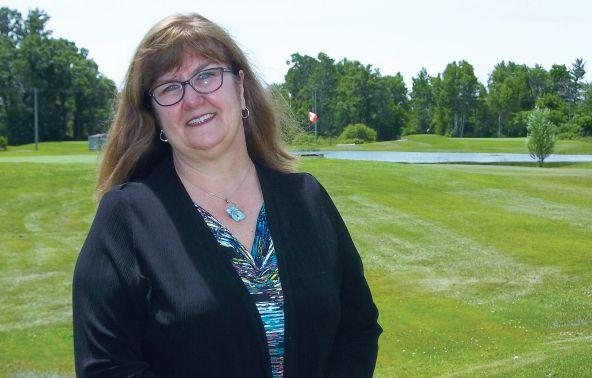
R. Marie Thorne, a pioneer among women in the turfgrass industry, has added another feather to her hat, having become the first female recipient of the John B. Steel distinguished service award. The award is presented annually by the Canadian Golf Superintendents Association (CGSA) to an individual who has made an outstanding contribution to the advancement of the profession of golf course superintendent.
Thorne is a well-known leader and mentor in the Canadian turfgrass industry, having shared her expertise and knowledge frequently and delivering customer service as a senior turf specialist while with Syngenta Canada. She has been a CGSA member since 1983 and has been involved in the turfgrass industry since 1981 after graduating from the University of Guelph with a Bachelor of Science degree and an agriculture major in plant protection. Upon graduation, she was one
of the few women in the industry leading the way for the numbers seen today. She continued her education and placed first in the class at the University of Guelph turf managers’ short course in 1994 and graduated from the Penn State University world campus turfgrass management program in 2004.
“Marie Thorne is well-known and respected in our profession,” CGSA president John C. Scott said.
“There’s no question Marie has had a profound impact on many in our industry.”
Thorne, who retired from Syngenta in 2018, gave back to the industry, spearheading several partnerships within the Canadian golf course management profession, supporting both CGSA and several regional groups across Canada.
“When John called to tell me that I was the recipient of this prestigious award, I was shocked, delighted and humbled all at the same time,” Thorne said.
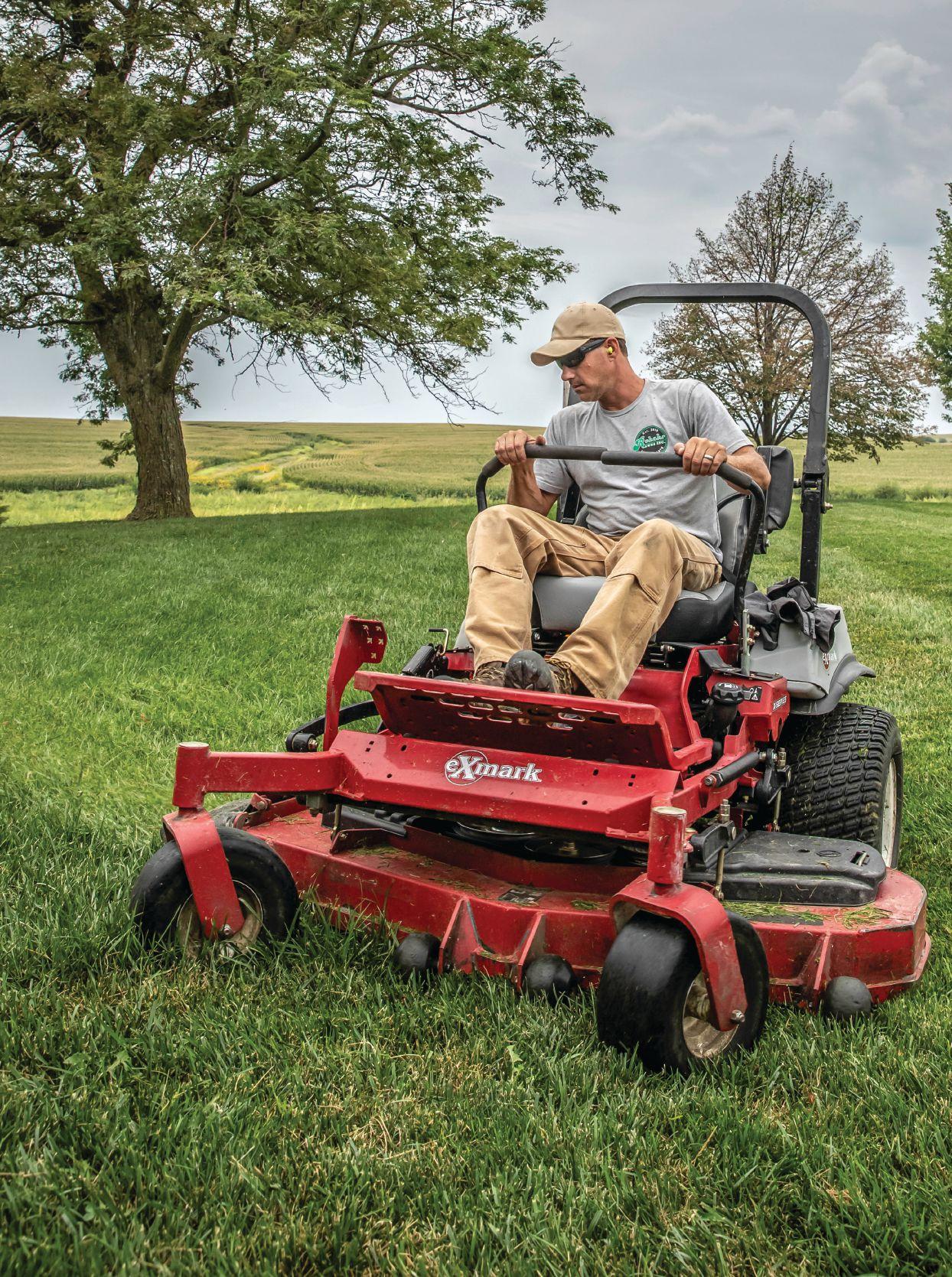


The various ways contractors can avoid a ‘revolving door’ when building their teams
By Mike Jiggens
Recruiting reliable, enthusiastic and hard-working employees in the landscaping industry is often a formidable challenge among contractors. When the right workers come along, a contractor’s next challenge is to keep them on board in hopes of maintaining consistency from one year to the next.
That’s often easier said than done, and many contractors find their businesses become a revolving door with each passing year. It doesn’t have to be that way, however, as a panel of landscape and horticulture business owners noted in January at the virtually delivered Landscape Congress conference.
There are several effective hiring strategies available to enable contractors to find the best possible new recruits, they said, and there are an equal number of arrangements that can be implemented to keep those skilled, engaged and hard-working individuals from moving on after only a season or two.
Sharing their recruitment and retention strategies were Lindsay Drake Nightingale, owner of Yorkshire Garden Services Inc., Vaughan, Ont.; Christine Moffit, owner of Christine’s Touch Gardening Ltd., Toronto; Kathy Thomas, recently retired owner of Green Thumb Landscaping Ltd., Burlington, Ont.; and Scott Wentworth, owner of Wentworth Landscapes, Picton, Ont.
Yorkshire Garden Services is marking its 20th year in business this year, coinciding with the International Year of the Garden.
Drake Nightingale said there was once a time when a business could place a small help-wanted advertisement in the local newspaper and then be inundated with resumes. As times have changed over the years, the rise of social media has changed the way companies conduct business.
“Sometimes, recruitment is super easy,” she said. “Sometimes – and more often – it’s very challenging. It still all comes down to networking. That’s the crucial element. It’s that face-to-face contact.”
Drake Nightingale is a proponent of networking through programs aimed at recruitment. One she advocates is the GROW (Get Ready for Opportunities at Work) program. It features three different components: new entrant worker, supervisory development and enhance -
ment, and employer’s choice. It’s the former she relies on most.
GROW’s new entrant component is an intense, four-week “boot camp” for new workers, who are taught basic technical skills and the means to recognize basic plant material. When interviewing new workers in the program, she finds they have a certain “spark” and an enthusiasm to become involved in horticulture.
Humber College’s horticulture technician program is another good recruitment resource, she said, but the job of recruiting is tasked to key staff who have developed a rapport with those completing its programs.
“It’s important to utilize your staff so that they can build that rapport with younger workers so that they can go into the environment they’re most familiar with and can talk about what our company is all about.”
Yorkshire Garden Services’ company purpose is that it’s “passionate about gardens,” which is an important component of the recruitment process.
“If we detect this passion about gardens in these employees, we can nurture it and develop it, and continue with their training and love, and build up upon what they initially know and how we can encourage that love to continue and make it a strong career.”
To help with retention, Yorkshire Garden Services offers its workers several incentives, including con-


tinuous training through Landscape Ontario and other outlets. Additionally, employees earn a living wage so that they can adequately meet their rent or mortgage payments.
Yorkshire Garden Services’ core values and purpose greatly assist in recruitment, Drake Nightingale said. Core values include respect, well-being, customer focus and being innovative. Attitude is a sought-after attribute among new recruits, she added.
Because of the company’s location north of Toronto, the need for licensed drivers is critical to the business. Possession of a valid driver’s licence is a huge, but the company offers advanced driver training as an incentive for younger people to become licensed. The programs are seen as a step
up from traditional young driver training programs.
Workers are trained so they have transferrable skills.
“We want them to have that professional foundation so they can stay with us and build, or they can take that professional foundation and go on to the next company.”
Christine’s Touch Gardening Ltd. has been in operation for 22 years. Moffit got her start in horticulture at the age of 13, mowing at a local golf course, but had worked a variety of jobs during her formative years in both paying and non-paying capacities. The experience helped shape her work ethic and the core values she has today, she said.
“Working in so many differ-
ent jobs gave me the experience of what it felt like under different management styles and work environments, both of which have significant impacts on recruitment and retention.”
Moffit confessed she used to struggle with recruitment and retention, adding she felt she needed to customize some ideas to fit her retention goal.
“It’s important to figure out what yours is and what is a realistic length of stay in your organization from your employees while staying true to your values.”
A living wage in Toronto is barely enough for someone to support a family, she said, which makes it challenging to retain staff when work can’t be offered year-round. The physical demands of the job
also present a challenge to keep employees.
Christine’s Touch typically employs 16 to 20 people who work from mid-March to mid-December. The company is often a “steppingstone” for many of her employees who move on to pursue other opportunities.
“We focus on training them up as quickly as possible for the duration they choose to be on our team,” Moffit said, adding she supports those who decide to move on when they feel the time is right. “Knowing this helps us successfully recruit those who are good fits for our organization and who have a mutual understanding.”
Employees average two to three years with Christine’s Touch with some leaving sooner and others remaining long-
er. Some seasons will see a high percentage of team members in their third, fourth or fifth years while only one or two workers will be in their first or second seasons. In such years, a high-performing dynamic will be realized with employees at the peak of their training. However, there are some seasons where the cycle is in reverse.
Moffit said it’s all about setting expectations with each season’s team leaders who will know what to expect from their teams, their capabilities, and where training and support are needed.
New recruits go through an orientation checklist on their first day of work. Guiding principles, roles and responsibilities, and equipment reviews are among the areas covered.
An effective retention strategy she has adopted the past several years is to have employment insurance premiums topped up for those who are laid off during the winter. This is aimed at encouraging employees to pursue continuing education opportunities without them having to worry about paying their bills while not actively working.
Kathy Thomas
Green Thumb Landscaping was founded in 1971 in Burlington by Thomas’ late husband, John. Following his untimely passing in 1993, she assumed the day-today responsibilities of running the business, but has since placed the company in new hands. She began her first steps toward retirement in late 2020 but hasn’t
completely let go.
The key to retaining good employees, she said, is to create a culture for which they’ll want to take ownership and become part of the company’s growth and success.
“As the leader, your job is to keep your employees engaged, learning and contributing to your company,” Thomas said, adding there are effective ways to help employees achieve success and experience growth. Employees also need to be supported and “picked up” when customers “dump” on them.
Regular half-hour training sessions provided each week to employees allowed them to interact with the company’s management team. The sessions also saw the employees cleaning their own trucks, sharpening their own blades and tending to their equipment.
“This helped bond the employee to his equipment and to the partner(s) on their team.”
Thomas said the sessions proved to be effective and helped the company develop a good reputation for itself.
“You get a good reputation because your employees know what your culture is, they know what you stand for, they know how to be ambassadors, and they have that ownership. They are actually part of the solution.”
Landscaping companies that say they have no time for such practices really can’t afford not to, she said.
“For me, it was a real payoff because it
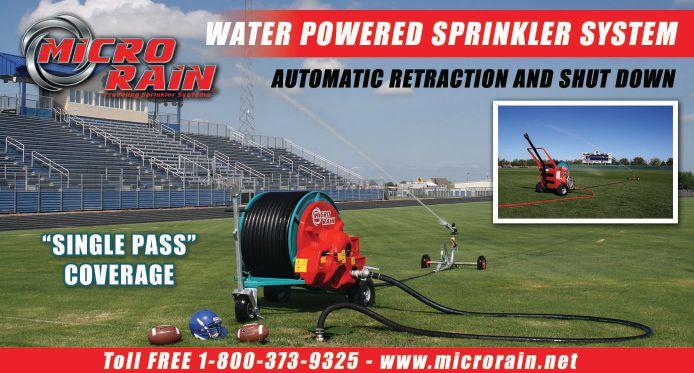
took me to the part where I needed to sell my company at some point, and the people who bought my company are like-minded, and they wanted to buy a company that has that reputation.”
Bringing joy and recognition to deserving employees goes a long way toward retaining them, Thomas said. Erecting a “wall of fame” in the office and sharing employee accomplishments with others during staff meetings are ways to recognize their accomplishments.
“People will want to be with a company where they’re recognized.”
One of the things that helped Thomas with her leadership skills and assisted her in developing a positive company culture was a 10-week human resources course she took 40 years ago at Sheridan College. She said it taught her how to assess different personalities, develop a leadership style, and understand if someone was ready to move into a leadership role and move forward.
Finding the right people to work in the landscaping industry is a universal problem, Wentworth said, adding contractors should always be looking for opportunities and the chance to tell their company story, their culture and the meaningful work they do.
Wentworth Landscapes has found good people from outside the landscaping industry. He said when recruiting new employees, he likes to consider those who enjoy such pastimes as hiking, fishing and rock climbing.
“These are people who obviously enjoy time being outside which is such a big part of our teams.”
Developing and building a team culture that entices employees to become part of it is a vital component of employee retention, Wentworth said, adding employees strive for balanced results in client experience, seek a legendary team experience, desire excellence in financial results, and want processes and systems that support these areas.
“We want to provide a team experience for those in our company that they want


to talk to others about.”
The landscaping industry was once looked upon as a “secondary trade,” Wentworth said, noting its employees were perceived as “grunt” workers. This perception, however, failed to recognize the meaningful impact the profession has on its customers’ lives and the communities in which they live. In today’s era of climate change and
The key to retaining good employees is to create a culture for which they will want to take ownership and be a part of the company’s growth and success.
heightened environmental stewardship, the industry’s projection to the public is even more important.
“We’re not just laying bricks, we’re not just putting plants in the ground, we’re not just mowing lawns and weeding beds – we’re creating venues for families to build memories and connect with nature and to live healthier lives outside.”
It’s important for contractors to tell those stories to their employees and to allow the message to sink in, he said.
Contractors want people to be part of a team that appreciates knowing it can accomplish more as a whole than any one individual can achieve on his own.
“No one of us is as smart as all of us.”
The cost of training is “priceless,” Wentworth said, adding to be able to grow and develop employees’ confidence and skills “has priceless returns to your bottom line, to your culture and to grow your people.
One of the keys to retaining key staff is through compensation, Wentworth said, noting employees should know today what their compensation is going to be for the next season.
“We don’t want them speaking to other people and considering other trades. We need to provide a living wage and beyond, but we need to have that communication now.”
Employees at Wentworth Landscapes were told in February what they could expect for the coming season.
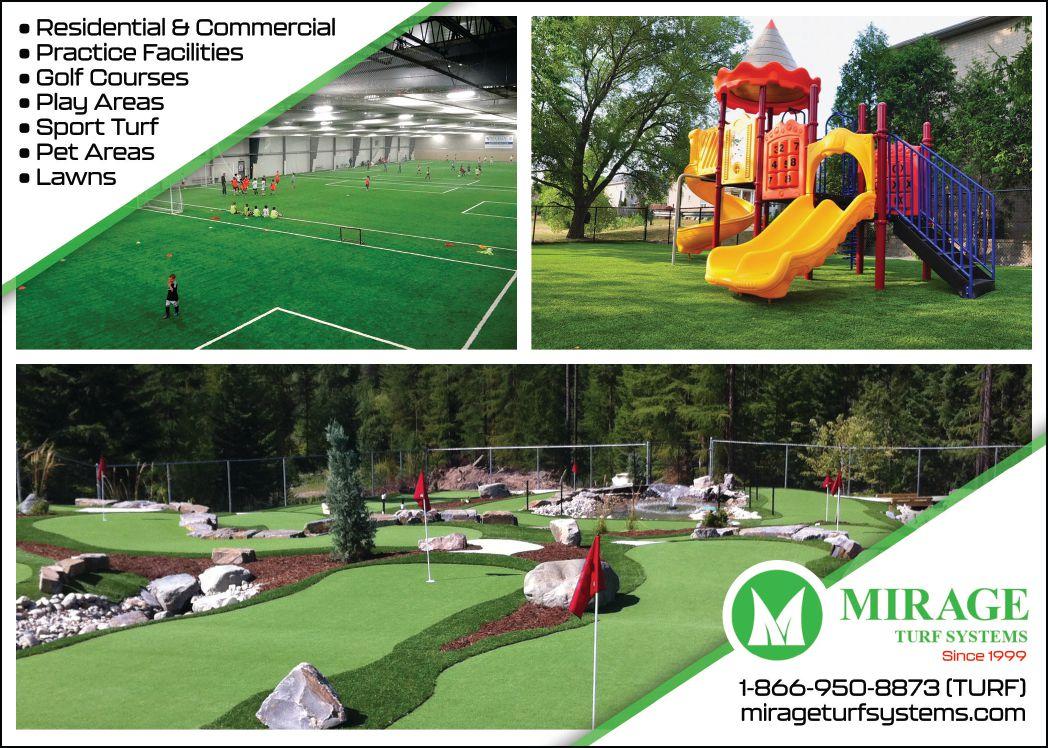



By Mike Jiggens
Exeter, Ont. boasts the province’s first baseball field to implement an innovative – for the late 1980s – red clay-based product on its skinned infield areas. Known as Mar-Co Clay, the product is a combination of processed raw red clay, fired red clay and angular sand. The material, which replaced an original limestone screening product, caught the attention of neighbouring municipalities for its better performance, and several other ball diamonds in the area incorporated the new product soon afterwards.
Today, approximately 95 per cent of baseball fields and 70 per cent of softball
fields in Ontario are being played on MarCo Clay.
Exeter’s Alvin Willert Field is celebrating its 40 th anniversary this year, and continues to use the product on its skinned infield areas.
The field’s architect and builder, Brad Gregus, recalled his disappointment with the original limestone screenings – often referred to as stone dust – that was used on the diamond’s basepaths and skin area.
“After two or three years of that, I became frustrated, realizing that it wasn’t performing the way I wanted it to, but there was nothing else available,” he said.
Gregus criticized the screenings’ “fines,” or the fine dust portion of the mix, which
he compared to portland cement. He said the dust typically settled between three-quarters of an inch to an inch into the composition and would lock up vertical drainage flow during a rain event, causing the material on top to become mushy and unplayable. Large, shallow ponds would consequently form in the skinned areas.
After playing baseball himself in Stratford, Ont. in the 1970s, Gregus dreamt of building a “real” baseball field in his hometown, complete with a grass infield, dugouts and perimeter fencing. At the time, the southwestern Ontario town had one other baseball field as well as a single softball field. The existing baseball dia-
“One Chemistry/Multiple Benefits”


A environmentally friendly bio-stimulant. Prepares the plant to combat biotic and abiotic stresses. “A Sustainable Greener Future”

• Pond Treatment
• Micronized Humic Acid
• Ultimate Compost
• Soil Amendment/Turf Recovery

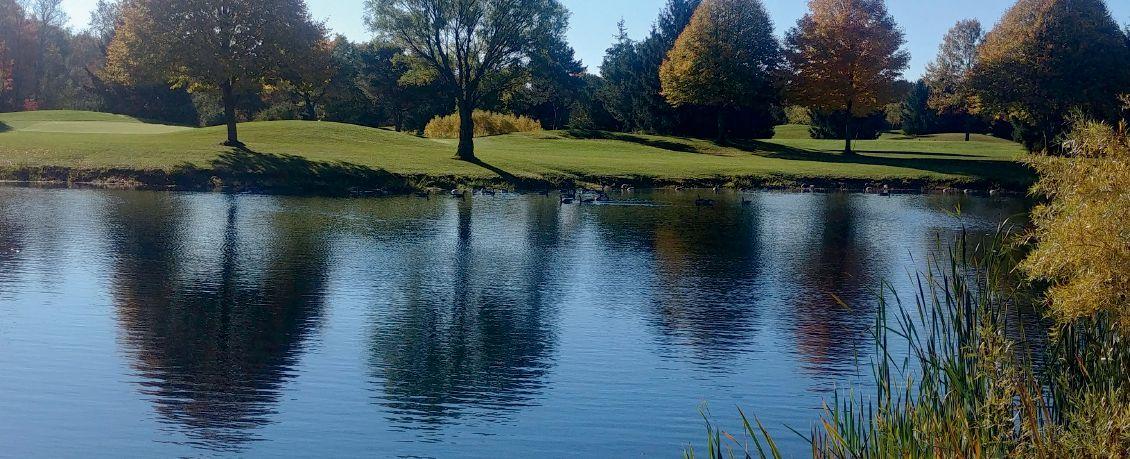


mond, however, featured a fully skinned, stone dust-covered infield.
With the support of local service clubs, Gregus succeeded in getting the municipality to approve the construction of a new field and one that could potentially become a draw for elite play and tournaments. The construction site was prepared in 1980 with an emphasis on proper drainage, and the field was constructed the following year. It opened for play in June of 1982.
Gregus was employed by EllisDon Construction at the time of the field’s construction and met by happenstance Ron Martin, a fourth-generation
manufacturer of brick and clay tile, whose operation was in Wallenstein, Ont. With Martin’s in-depth knowledge of clay in both the fired and raw forms, and Gregus’ expertise in baseball field construction and performance, they collaborated their efforts to develop a product that contributed to better-performing infields.
Learning it was the limestone dust that was responsible for the ponding following a rain event, their new red clay product was developed and perfected at a makeshift lab




inside Gregus’ garage, and the duo founded Mar-Co Clay Products.
Soon afterward, Martin solicited the help of the University of Guelph to develop the lab at the company’s manufacturing facility to access materials more accurately and provide custom solutions.
“Ron wanted to ensure we were making the very best product possible.”
As the business grew, Gregus took a leave of absence from EllisDon from 2009 to 2013 to set up Mar-Co Clay manufacturing facilities and grow the network of dealers and distributors in the United States. He said the experience helped nurture his knowledge of turfgrass since his dealers were all graduate agronomists who sold seed, fertilizer and pesticide products for the turf industry.
The Mar-Co Clay product is currently used by baseball and softball fields throughout Canada and the eastern United States on skinned infields, pitcher’s mound and home plates areas, and on warning tracks. The company’s mound and home plate products are also shipped to the Caribbean, Japan and Korea. The red clay composition is noted for its ability to enable faster vertical drainage through the material, increase absorbency within it, as well as retain moisture longer during dry periods.
Gregus’ desire for a grass infield at Alvin Willert Field almost failed to materialize. When he presented his draw-
ings to the town more than 40 years ago, its engineers redid the plans with an entirely skinned infield in mind. The change back to Gregus’ original vision occurred as Exeter’s recreation director was about to retire, and “no one was watching the fort” between the time of his retirement and the hiring of a successor. A lastminute decision during the construction period was made to replace the last six inches of gravel and limestone in the infield with a topsoil-sand blend, leaving no one aware of the plan until seed establishment was realized.
“My original intent and plan was to put a grass infield in,” Gregus said. “The town decided to go with a fully skinned infield. But, at the last minute, I pulled the trigger on the infield change.”
The town opted to stick with the already grown-in grass infield – a decision Gregus described as a “coup” – and the stone dust skin and basepath areas eventually gave way to Mar-Co’s red clay product in 1990.
The field, named for a long-serving recreation director, measures 311 feet in left field, 342 feet in left centre, 382 feet in centre field, 352 feet in right centre and 318 feet in right field. Its turf is a combination of Kentucky bluegrass, fescue and ryegrass.
“I’m slowly introducing more fescue and rye to it,” Gregus said, noting the strategy lends itself to better resilience in the outfield to drier weather. Although plans are in
store to irrigate the outfield as well, only the infield and foul areas outside the basepaths and behind home plate are currently irrigated. The introduction of more fescue and ryegrass in the outfield is meant to help until the field is fully irrigated.
“Bluegrass doesn’t perform quite as well because it’s a shallower root.”
The current irrigation system was installed in the mid1990s. About a decade later, four more heads were added outside of the skin to deliver water over a 30-foot margin onto the outfield and skinned infield areas.
Gregus said the field suffered
from severe drought in its early years, prompting the irrigation system’s installation.
“An irrigated field will perform much better,” he said. “Healthy turf is safer, performs better, and is easier to take care of, and allows for better athletic performance.”
Gregus has reached out to local agronomists with turf seed expertise, saying their help is “invaluable.”
Now retired from both EllisDon and Mar-Co Clay Products, he continues to devote his time to taking care of the field along with fellow retiree Doug Fairbairn, who oversees infield and foul area cutting as well as field scheduling with all teams,

New! Bannerman Model B-IS-F145
Stone & Debris Burrier
Controls weed infestation in walking paths, warning tracks and baseball infields with the “One Pass” ground preparation for seeding or sod replacement in goal mouth areas.
Features include:
• Tractor PTO Driven - (30 to 45HP) recommended
• 28 Special Centra Rotating “Hoe” Blades Leveling
• Grader Blade on Screw Jacks
• Rear Adjustable “Net” Roller complete with Soil Scraper and Brush
• “Net” Roller can be offset to work close to fences, walls and curbs
• Working width 57”, Standard 3 Pt Hitch Cat # 1 & #2
serving as the liaison with the municipal parks department. Charlie Beausoleil, a retired millwright/welder and machinist, maintains the equipment and builds specialized equipment pieces.
Strict attention is given to field maintenance so that the diamond delivers the ultimate in playability.
The infield is mowed at 1-3/8 inches while the outfield is cut at a height of 1-7/8 inches. During the 2021 season, the field was mowed 66 times. Blades are sharpened before each mowing session to ensure the turf plants heal quickly,
retain moisture and promote uninterrupted growth. Rollers are attached behind the mowers, mainly for striping reasons, but serve another important purpose. “What we found is it’s actually quite good in pressing down and taking care of the small bumps and minor damage caused by athletic play. You’re gradually making a flatter surface.”
Most “bumps” appear in the spring because of frost coming out of the ground and lifting root systems.
Local John Deere dealer, Huron Tractor, loans out a zero-turn mower to cut the outfield. The arrangement has proven to be a big boost to the
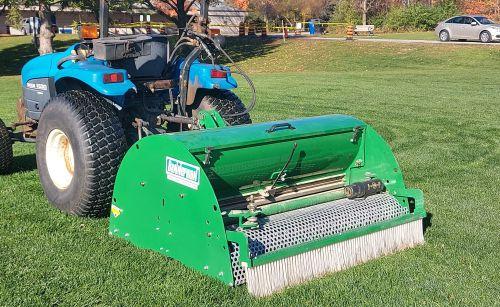
Unique angling of middle two rotors from 0-6 degrees to allow raking and agitation of surface to incorporate seeds or dressings more effectively. Accurate stainless-steel seed metering system.
Features include:
• Seeding Width of 55”
• Long Life “Star” Seeding Blades Interlock for Self Cleaning
• Hydraulic “ON/OFF” Seed Flow Control
• Rear Drag Brush
• 3 Point Hitch Cat #1 & #2


team’s efforts, resulting in better turf conditions.
The best time to prepare for each new season is in the fall, Gregus said, noting it’s the ideal time to put down ample potash and slow-release phosphorus. Phosphorus is applied in November or December and is good through May or June, he said. Potash produces food for the root system during the winter months while phosphorus helps expand the root system both horizontally and deeper into the ground.
The fall is also when the infield and basepaths are worked up a full 1½ inches and everything is edged. The goal is to have the field ready for play by March 31.
“Depending on when snow dis-

appears, we’re ready to play in 10 days after snow is gone because the field is so well drained. The town did an excellent job of getting it drained before we built it.”
The town had put in a gravel base to within six inches of the finished level in anticipation of creating a fully skinned infield at the time of the field’s construction. Another three inches of gravel and three inches limestone screenings were slated for inclusion, but the last-minute decision to grow in a grass infield saw six inches of topsoil added instead to the base gravel layer.
“Because of that, it drains really well. We can have a six-inch rain and it goes straight down. We have
no rainouts on this field.”
The field was constructed on what was previously a heavy clay base, with an 18-inch layer dug out, and replaced with granular ‘A’ gravel and drained every 16 feet. Gregus said it was essentially a farm drainage project using six-inch “Big O” headers and four-inch “Big O” common runs. The high end is along the first baseline and out-ofplay area by the first base dugout, with everything draining toward left field.
Field preparations for the next game are made immediately following the previous contest with much of the work accomplished by the players and coaches. Once a game or practice has ended, six players

This is the season of recreation, outdoor pursuits and renewed focus on fine turf surfaces. Turf Fuel’s innovative new Vertical will surely give
a fresh edge and ensure a successful growing season.

ABOVE GROUND:
• Anti-stress technology
• Wellness triggers
• Super efficient potassium
• Antioxidants
• Growth promotion
• Improved photosynthesis
BELOW GROUND:
• Rooting technology
• Food for soil microbiology
• Proprietary three part organic acid blend
• Improved nutrient availability
• Key sugars for plant health and microbial stimulation
• Rich carbon supply for rhizosphere
target-specialty.ca |
Mitch Davidson
Southern Alberta, Kootenays mitch.davidson@target-specialty.com 587.223.2083
Jason Hooper
Lower Mainland & Interior Bc jason.hooper@target-specialty.com 604.317.2476
Chris Paterson
Southern Alberta & Kootenays chris.paterson@target-specialty.com 403.540.0157
Eric Gratopp
Northern Alberta eric.gratopp@target-specialty.com 587.284.4744
Gregor Kowalski
Vancouver Island gregor.kowalski@target-specialty.com
250.686.3909
Josh Seibel
Saskatchewan & Manitoba josh.seibe@target-specialty.com 306.861.8296
Mark Scenna
Sales Manager, Canada mark.scenna@target-specialty.com • 416.458.2396
Perry Brazeau Toronto / East perry.brazeau@target-specialty.com 416.705.8006
Colin Hindle
Ottawa & Eastern Ontario colin.hindle@target-specialty.com 613.314.9711
Jason MacRae
Quebec North & West jason. macrae@target-specialty.com 514.712.8006
Mitch Guy
Northern Ontario mitch.guy@target-specialty.com
705.444.9010
Joey Losito
Quebec South & East joseph.losito@target-specialty.com
819.571.1677
Craig McCutcheon
South-West Ontario craig.mccutcheon@target-specialty.com 905.351.6544
Chris Nelson
Toronto West / Niagara chris.nelson@target-specialty.com • 647.382.6868
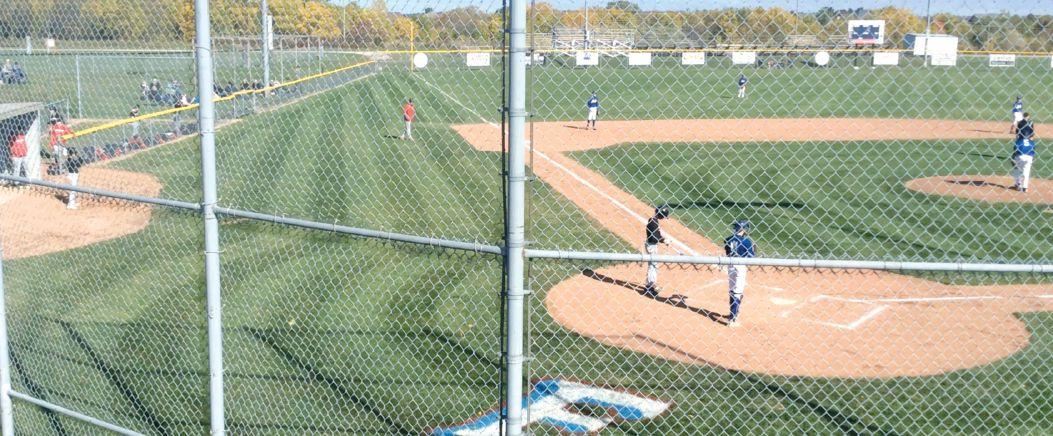
are assigned three-foot and six-foot rakes for the basepaths and skin area, while five other players use stiff stable brooms to work on the field’s grass/dirt edges. Each player is responsible for about 175 lineal feet which they’re able to groom in about six minutes. Five players will sweep while six others rake the skinned basepaths. Additionally, a pitcher will work with a coach to rebuild the mound while a catcher joins another coach to build back the home plate area.
Gregus oversees this post-game and post-practice ritual, then personally tends to watering and tarping.
“We take a lot of pride in our edges. Every time we practise or play out there, the edges are swept with the stiff stable brooms. I’m adamant about that. That’s almost the most important practice on the field.”
In addition to this day-to-day regimen, Gregus also uses a power broom sweeper six times a year, followed by edging with a Turfco
edger and “down on your knees” trowelling of the edges to “exact flatness.”
He points out, “I prepare for every game as though it’s the Yankees coming in to play the Dodgers.”
The goal behind good edging is to have the baseball retain a consistent trajectory, whether a hard-hit ball bounces two inches on the grass in front of the edge, directly on the grass/dirt edge or two inches beyond the grass/dirt edge, he said. The practice allows infielders to attack the ball and be confident a bad hop won’t strike them in the face. If a player’s feet can’t detect a lip-free, grass-to-dirt interface, the maintenance was performed correctly.
Gregus supervises the work and ensures the infield material is tamped down hard, soaked thoroughly and covered with tarps overnight.
“The best time to prep an infield, mound and home plate area for a game is immediately following a
‘We take a lot of pride in our edges’
game. In other words, at night, postgame or post-practice when we work these areas, watering them down and packing down the clay, making them game-ready. This is followed with a liberal soaking of the areas and then tarping them until mid-afternoon the following day. This process allows for the clay to dehydrate very slowly, resulting in optimum firmness for the following game or practice.”
Leaving tarps in place for as long as possible allows the clay to get tight and firm so that it won’t pulverize as easily.
If tarps don’t cover the skinned areas, and it’s windy and sunny the following morning, water will dehydrate quicker, creating fissure cracks. By game time, the material will pulverize faster than if it’s kept damp for as long as possible.
Weeds are kept at bay by maintaining a strong turf root system. Gregus uses an aggressive fertilizer program of nitrogen, liquid iron and phosphorus to “squeeze out” weeds.
Alvin Willert Field is part of a sports field complex that includes three other diamonds and soccer fields. The town looks after all maintenance required at the other fields and had previously mowed Willert Field. As Gregus and Fair-
bairn neared retirement and had more time available, they assumed the mowing duties themselves as well as the remaining upkeep inside the fences. Gregus said he still considers the town as “an integral partner in the overall package” because it provided such critical infrastructure as lighting, fencing, the backstop and bleachers, and is helping plan future improvements.
Lights were installed at the field 20 years ago, allowing for night play.
The field is used by the town’s minor baseball leagues, elite teams and a senior team that has captured the Ontario Senior AA championship four of the past seven seasons. Prior to the COVID-19 pandemic, the field saw game play five or six times a week. Including practice









time, it was used every day. Use of the field was restricted to elite teams in 2020 in compliance with COVID protocols, and local and elite teams played shortened seasons in 2021.
Even though field usage was limited the past two seasons in comparison to pre-pandemic years, maintenance practices were perhaps a little greater, Gregus said, noting grass and weeds aren’t aware of COVID and the shutdown of most games.
Various groundskeeping duties are performed annually from late March to December. The field’s final cut in 2021 was made on Dec. 12.
His plans for 2022 include continued improvements and the ex-
tension of the existing irrigation system. Additionally, the production of a six-step YouTube video is planned, to demonstrate how to properly edge and maintain a ball field’s grass-dirt edges.
Gregus says he is indebted to the late Mike Reagan of Labatt Park in London, Roger Bossard of the Chicago White Sox and Dave Mellor of the Boston Red Sox.
“These guys would give me all afternoon if I wanted, showing me their techniques and answering every question with genuine interest. They’re great teachers and have been great mentors to me.”
Gregus added he is committed to “helping young guys develop skills and confidence in improving and maintaining their fields.”







By Mike Jiggens
Ahealthy worker is apt to do a better job, will have the stamina and energy necessary to get through a full workday, and will be an asset to his or her company. Not all employees, however, may be entirely healthy, and many others may have health issues and not realize it.
Dr. Matthew Posa, a Milton, Ont. chiropractor, speaking in January at the virtually presented Landscape Congress conference, said a person’s health is regarded as his greatest asset, but many people don’t fully understand the concept of health.
“What is telling you if you’re healthy or not healthy?” he posed, adding the usual response is whether one looks good or feels well. Those who maintain a proper diet and exercise regularly may claim to be healthy if they look good and feel well. But instead of health being something people try to achieve regularly, it becomes something to which they react.
“You’re now being reactionary instead of being pro-active about your health,” Posa said, adding people tend not to do anything about their health until they


begin to look bad and feel unwell. “The problem with reacting to health is you’re going to miss the top killer in our country today.”
Heart disease is ranked as the No. 1 cause of death among Canadians, yet 80
per cent of the time the first symptom experienced is death because of either a massive heart attack or a stroke.
“Eighty per cent of the time you don’t feel anything until you’re dead.”
Those who have died of a heart attack


With The Andersons patented Dispersible Granule (DG) Technology, particles are more rapidly and efficiently broken down. Upon contact with water, each DG granule disperses into thousands of microparticles that move through the turf canopy into the root zone. This level of dispersibility ensures precise nutrient delivery, while eliminating issues associated with runoff and nutrient loss.


or stroke likely weren’t truly healthy, even if they ate well and exercised regularly, he said.
The No. 2 cause of death among Canadians is cancer, and everyone with cancer in his body is unaware of it until it’s diagnosed, Posa said.
“You can have cancer in your body and not know it. More people in Canada, and even the world, are dying of things they don’t even feel. That is scary and says a lot.”
The problem, Posa said, is that we live in a society in which we’re led to believe
that the state of our health is based on how we look and feel. When someone begins to look or feel bad, he visits his doctor and is usually presented with two options: drugs or surgery. Symptoms of an ailment are the body’s way of sending a warning signal that something is amiss. Symptoms can include headaches, depression, blood pressure changes, heart rate issues, numbness, or any type of pain.
“Symptoms are not only the beginning of the disease process, but they come at the end of the disease process.”
In the case of heart disease or cancer,
symptoms may not be felt until it’s too late.
Posa said people need to get to the root cause of the problem and not just cover everything up with medications.
“If you don’t put out the fire, the building is going to burn down.”
If medication is used to deal with a health issue, does the problem still exist if the symptoms disappear? Posa said those relying on multiple medications aren’t living the kind of life they were meant to live and are mostly getting increasingly sicker.
“They spend their lives in an imprisoned body. If you continue to cover up the symptoms, the fire gets worse. It will burn brighter and hotter, and the disease pro -
continued on page 36







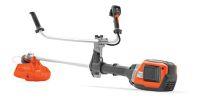




Today’s green spaces need modern care. Husqvarna’s lightweight, powerful and durable battery tools are long-lasting, quick to change and have zero direct emissions without compromising on performance. They are also much quieter than their gas equivalents so you can start earlier, finish later and get more work done – without disturbing the surroundings. More and more professionals are switching to Husqvarna so they can grab a piece of the action. Visit Husqvarna.us/demo to sign up for a free demo and you’ll see what we mean.
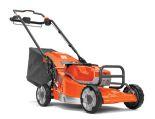



A business that creates a welcoming space for its employees is one that is apt to succeed
By Mike Jiggens
Many companies have taken it upon themselves in recent years to build their businesses with diversity and inclusion in mind as a means of constructing a culture that has employees engaged and working toward improving the bottom line.
It’s no different in the landscaping profession. A business that creates a welcoming space for its employees, where they can feel whole and accepted, is one that is apt to succeed, says Dr. Jeanette (Danielle) Barber, a U.S.-based consultant and author who works with the Looking Forward with STEM (science, technology, engineering, and mathematics) program aimed at students in grades 6 through 8.
Barber, speaking in January at the virtually delivered Landscape Congress conference, said diversity and inclusion are the key components in formulating a solid company culture.
Diversity is differences, she said, and not just those that people bring with them to the workplace. It’s the concept in which those differences can be used in an organization as a positive contributing factor to enhance its culture and innovation. Diversity tends to be discussed in two dimensions – primary and secondary.
Primary dimensions of diversity include a person’s race, gender and age. If a

company hires different types of people, it will produce a diverse workforce.
“But, if you don’t create an environment where your employees don’t feel welcome or they don’t feel compelled to do their best work, then they won’t stay and you won’t be able to retain this population,” Barber said.
A company can check off the diversity box and claim to have good representation, but it must take a further step to understand how to retain a diverse workforce, she added.
“This is where inclusion comes in.”
Inclusion is the extent to which each person in an organization feels welcomed, respected, supported and valued as a team member. In such an environment, each employee feels more engaged and is more apt to contribute to the business of the organization. Barber said this means a company strives to create a space where its employees can go to work and feel accepted and whole and can use their energy to be productive as opposed to using that energy to merely co-exist or navigate toward a culture in which they don’t feel
truly accepted.
Engagement is when employees share the values or mission of the company. They are invested and highly motivated, yet the conversation must move toward creating a more inclusive workforce, she said.
Diversity has other layers, often referred to as the secondary dimension, and they aren’t as apparent. Using herself as an example, Barber noted her upbringing in the U.S. South can have a large impact on the way in which she conducts herself. Admitting to being somewhat conservative, she often may say, “Yes, ma’am” or “No, ma’am” in conversation. Such behaviour may differ from that of a co-worker who grew up elsewhere.
“If we’re talking about diversity in the workplace, we don’t want to stop at that first dimension because, if we do, we can miss out on an entire conversation on what diversity can mean.”
The primary dimension of diversity is what is apparent while the secondary di-

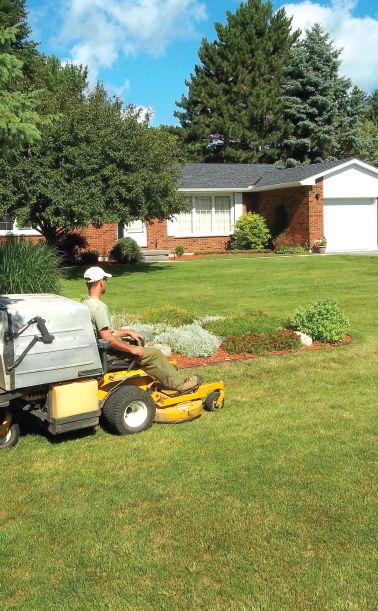





From Aerators to Wetting Agents; from Mowers to Topdressing Materials and Equipment; you’ll find everything you need with Turf & Rec’s Buyer’s Guide.
Published every year in the August/September issue, it also lives online as a searchable database. It’s a way to cut through all the search engine noise to find serious, established and reputable organizations across the country. You can search by province, company type and category using the powerful online search.
Visit TurfandRec.com/Buyers-Guide to research your next purchase FIND TRUSTED CANADIAN VENDORS AND SUPPLIERS WITH THE ONLINE BUYER’S
Attention Suppliers: Add Your Listing for Free!
Do you supply products and services to Canada’s landscaping, golf, sports turf and snow and ice professionals? Get listed in the trusted directory professionals rely on when making buying decisions. Visit TurfandRec.com/Buyers-Guide and click on the green “Add Listing” button in the top right-hand corner to get started today.
For more information contact Rebecca Lewis at RLewis@annexbusinessmedia.com or call 519-400-0332.
Fleet Week Promotions only valid at participating Shindaiwa Dealers. Check in-store for full details.
ALBERTA FOREST & GARDEN .
JED’S EQUIPMENT LTD
ALBERTA SMALL ENGINE
EDGE EQUIPMENT LTD
THE LAWNMOWER HOSPITAL PARKLAND FARM EQUIP (1990) LTD . .
TERRY’S POWER EQUIPMENT SALES
CHILLIWACK OUTDOOR POWER EQUIP
PILON TOOL RENTALS 1972
ISLAND SAW & TURF
SAVOY EQUIPMENT
MILL BAY POWER PRODUCTS LTD
KOOTENAY INDUSTRIAL
HI-WAY POWER AND MARINE LTD
RICHLOCK RENTALS AND SALES
FRASER VALLEY EQUIPMENT
WEST COAST GARDENERS CO-OP SAVOY EQUIPMENT
ALTONA FARM SERVICE LTD
MASTER TECH SMALL ENGINE REPAIR
G&A RENTALS LTD
CUMMINGS SMALL ENGINE SERVICE . .
R D POND SALES
SMALL ENGINE HOSPITAL INC
LES FRÈRES G&G LTÉE
L.A. THERIAULT & FILS LTÉE
CR YARDWORKS & EQUIPMENT
EASTERN POWERSPORTS
ANTIGONISH RENT-ALL EQUIPMENT
CLASSIC RENTALS LTD
RENTSHOP INC
MERCER EQUIPMENT INC.
BRADFORD RENTAL SALES & SERVCE
AL’S LAWNMOWERS
B.R. DICKSON EQUIPMENT INC
CRAIG’S GARAGE (MEDINA) LTD
CURRENT POWER MACHINERY INC
W.E. ENTERPRISES LTD
WINDMILL POWER EQUIPMENT LTD
B&T MACFARLANE
NOELVILLE RENTAL & SALES
ANTHONY TIMMERMAN REPAIR
PILON FASTENERS
ALPINE LAWN & GARDEN EQUIPMENT
MCGILL EQUIPMENT
LARRY’S RENTALL INC
ST. THOMAS RENT-ALL
ALLEN’S SMALL ENGINE SERVICE
SUDBURY SMALL ENGINE
KOOY BROS. LAWN EQUIPMENT LTD
M.R. BLAIS SALES & SERVICE INC
WELLESLEY HOME CENTRE
WICKHAM NURSERYLAND
403-248-0878
403-640-4266
780-944-9559
780-455-3343
780-437-1851
780-963-7411
250-287-9755
604-792-4410
250-338-5361
250-748-4341
250-868-1010
250-743-7994
250-352-5301
250-248-3621
250-656-9422
604-590-1433
604-430-4117
250-545-0627
204-324-5523
204-482-7606
204-467-7368
204-237-4911
506-472-7663
506-854-2807
506-776-4338
506-764-2649
506-854-0333
902-660-1228
902-863-6633
902-895-4242
705-435-3844
705-503-3535
905-775-7101
905-634-2800
905-331-5040
519-349-2480
905-822-4211
905-629-1424
905-569-2055
613-225-0555
705-898-3201
613-264-0091
613-446-7570
416-292-8900
416-751-4455
905-984-5522
519-631-5450
613-524-1135
705-564-9772
416-242-3513
613-443-1230
519-656-2010
306-825-3262
mension represents the layers of an individual. Barber likened the creation of an inclusive work culture to that of farming. It begins with the need to “cultivate” diversity and prepare the organization’s foundation. A company’s mission, vision and values are necessary in the cultivation process, she said.
From there, the focus turns to “growing” the culture by recruiting diversity before moving on to inclusivity. If done correctly, the company “reaps” the benefits of inclusion.
Barber warned that diversity and inclusion are not “one and done,” enabling the box to be checked off.
“It’s all about constant refinement. You have to refine and evaluate and recultivate in order to continuously develop your people.”
‘It’s important that top leadership understands and buys into why inclusion is important’
To meet the needs of a newer generation, companies must constantly revisit to ensure current practices are relevant.
Recruitment of diverse individuals can be accomplished by attending career fairs and organizational conferences or by visiting colleges and universities to find available talent. Barber said company leaders must ask themselves some basic questions:
• Are the policies and benefits we have in place attracting diverse candidates?
• Do we have flexible hours, and are our benefits in line with something that might attract a diverse candidate?
• Are we broadening the view of family?
• Do our job descriptions and current performance standards eliminate any potential bias?
If a job description suggests a company is trying to recruit male employees, it creates a bias which eliminates an entire demographic, she said. She added the establishment of employee resource groups helps in the onboarding process by providing guidance.
The “seed” is planted once a diverse individual has been hired. If a company’s goal is to increase diversity, it may wish to implement a program that ensures the right people are in place to oversee and lead, Barber said.
“You must ensure that diversity and inclusivity are part of everything you do. With onboarding, are you allowing new hires to be exposed to a variety of individuals within your organization who look like them?”
People tend to gravitate toward sameness, she said, and they should be able to select a mentor on their own and not simply be



placed with someone the employer feels is a good fit.
If a lack of awareness in diversity and inclusion becomes an issue, it should become a learning opportunity and not a means to punish someone, Barber said.
“You want to make sure managers are being rewarded when they do try to put those diverse teams together because you want that to be the culture in your organization.”
When offboarding, it is equally important to ask departing employees if they felt accepted and welcomed, she said.
“You don’t want to go with the assumption that they left because their talents didn’t meet the requirements of the job.”
Barber said employers must ensure their employees benefit from existing diversity and inclusion measures and look for ways the organization can improve or expand its focus on inclusion. Key decision makers often tend to be white males about 45 or more years old.
“It’s important that top leadership understands and buys into why inclusion is important.”
To achieve that buy-in, she said companies must be able to sell leaders about how it’s good for business morale and profit, and how having such a program in place is apt to lessen the likelihood for liability from diversity missteps. It’s an easier sell today than it was 10 or 20 years ago, she added.
“The global demographic has increased to diversity,” Barber noted, adding top leadership must model the way the culture is going to be for the organization.
For smaller organizations without a diversity officer, allies can be found to help champion the cause, she said, adding leadership training is important because leaders can’t
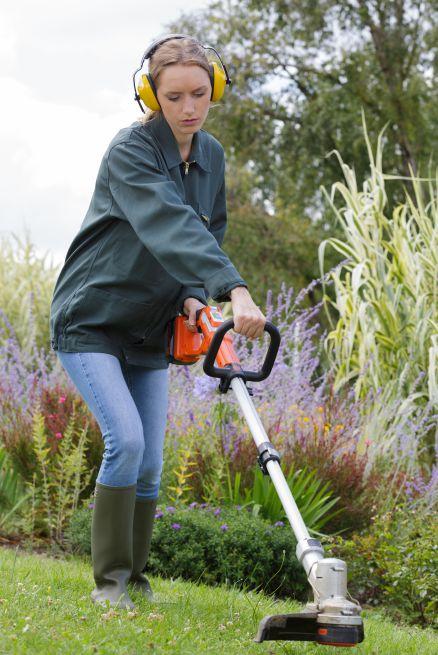
always be expected to know every detail about inclusion and diversity. Companies can be aided by human resources managers or a diversity and inclusion division to help structure training, or it can be outsourced to a consultant.
“In the end, everyone in the organization needs to be trained, but it’s vital you start with top leadership so they can embrace and model the culture and then work down the organizational chart.”
Barber encouraged candid conversations to take place that leave preconceived notions and biases behind and allows for dialogue to come from places without judgment.
“This can provide a great opportunity to learn from one another, but not often do these conversations occur because a lot of times leaders might be afraid to dig deeper and see that the system is flawed.”
Effective follow-up and evaluation can help keep leaders to be held accountable for creating an inclusive environment. She said this can be accomplished through employee surveys, evaluations and incentive programs, and provides checks and balances to ensure everyone is engaged from the top down.
“If you want to improve your younger age demographic, go to those employee resource groups to try to have them help you reach those strategic goals.”
Goals aimed at keeping a company competitive must match the business’ inclusion and diversity goals, Barber said.
She cautioned companies not to rely solely on quantitative metrics, but to include qualitative measures as well, such as engagement, employee development and which demographic is being promoted most and to which positions.
The most important aspect of diversity and inclusion, Barber said, is employee retention. Employers don’t wish to recruit someone, only to see that employee leave the company after a year or two.
“Sometimes turnover can be costly and disruptive to the chemistry and culture of the organization.”
As more baby boomers continue to retire, the workforce has become dominated by millennials and Generation Z employees. Millennials and Generation Zs and different from baby boomers and tend to jump from organization to organization, she said, making it challenging to retain them.
“We need to know what they are looking for.”
Research suggests that millennials and Generation Zs seek a positive and healthy culture and something that is bigger than themselves, such as an organization’s mission and purpose. They also seek development and learning opportunities.
Job security, opportunities for growth and respect are among the things most sought after by employees. If employees are underutilized by a company, they may feel disrespected if they’re not doing work that is commensurate with their academic achievement.
By Mario Cywinski
The big changes in the pickup space for 2022 are in the 1500 sized group, with Toyota redesigning its U.S.-built Tundra, Ford adding a fully electric version of its F-150 (Lightning), General Motors refreshing its Chevrolet Silverado and GMC Sierra models, and Stellantis making a series of package additions and changes.
The big news for Ford’s pickup portfolio is the addition of the fully electric F-150 Lightning. The Lightning offers two lithium-ion battery options – a standard-range with an estimated 370 kilometres (km) of range, and an extended-range version with an estimated 483 km of range. Power comes in two flavours as well – standard-range model with 426 horsepower (hp), and extended-range model has 563 hp. Both versions come with 775 foot/ pounds (ft/lbs) of torque.
Capability-wise, Lightning offers an estimated maximum payload of 1,800 pounds for extended-range to 2,000 pounds for standard-range. Maximum estimated towing ranges are (with max trailer tow package) from 7,700 pounds (standard-range)

to 10,000 pounds (extended-range). Other F-150 models have already received Onboard Scales, Smart Hitch, and continuously controlled damping, plus appearance package, utility package, and colour changes.
A new Raptor R trim is also on the horizon.
For 2022, Super Duty now has an available 12-inch touchscreen with cloud-connected SYNC 4.
A new Lariat Sport Appearance Package offers body-colour grille, bumpers, and mirrors. All King Ranch and Platinum models now have standard 4x4. Other package and colour changes also occured. Super Duty models now offer an available 360-degree dual beacon LED warning strobe, which take the place of a four-corner LED warning strobe. Larger F-350 to F600 chassis cab models get revised frame bridging reinforcements as standard. Lariat receives standard SYNC 4 and SiriusXM with 360L tank.
For 2022, the Chevrolet Silverado sees a refresh, which updates various parts of the vehicle. All trim levels have a new front fascia and grille, revised DRLs, and new colours. Silverado LT models and above get a new interior with a standard 13.4-inch touchscreen with a 12.3inch digital instrument cluster. Available (on High Country trim) is Super Cruise, a hands-free driver assistance feature, which in this version also allows trailering. The main two aspects of the system are the driver attention system (which using a small camera makes sure the driver is looking at the road) and LiDAR map data. This is the first time it is available on a Chevrolet pickup truck. The system works on about 320,000 km of divided and compatible roads in Canada and the U.S.
An updated 2.7L turbo engine now offers 420 ft/lbs of torque (a 20 per cent increase over the previous version), has a 30 per cent stiffer
crankshaft, and can now tow 9,600 pounds on two-wheel drive models. The 3.0L Duramax turbo-diesel engine models now allows for inclusion of a max tow package (through chassis changes), and in turn can now tow 13,300 pounds on two-wheel drive models.
A new ZR2 off-road focused model has been added for 2022. It has a 6.2L V-8 engine (420 hp and 460 ft/lbs of torque mated to a 10-speed automatic transmission), tuned spring with Multimatic dampers, front and rear e-lockers, off-road chassis, 33-inch off-road tires, skid plate package, high-approach steel front bumper, and more.
Sierra offers a refreshed exterior with new fascia, front bumper, grille, and headlight design, along with new dual-projector LED

headlights with C-shaped DRLs, and new colours. An updated interior offers a new centre console design and Sierra SLE models and above get a new interior with a standard 13.4-inch touchscreen with a 12.3-inch digital instrument cluster.
The 2.7L turbo engine is enhanced and offers 420 ft/lbs of torque, a 30 per cent stiffer crankshaft, and can tow 9,400 pounds on 2WD models (9,100 pounds on 4WD). The 3.0L Duramax turbo-diesel engine models now can have max tow package (through chassis changes), and in turn can now tow 13,200 pounds on 2WD
models (13,000 pounds with 4WD).
A new AT4X model has been added for 2022. It has a 6.2L V-8 engine mated to a 10-speed automatic transmission, tuned spring with Multimatic dampers, front and rear e-locking differentials, off-road chassis, two-speed transfer case with a steel shield. A new Sierra Denali Ultimate trim is added and becomes the top-range model.
RAM 1500
For 2022, all models Big Horn and above get the new Uconnect 5 system, which has

Inside this book are proven techniques that enable you to design, build, and manage an efficient and safe turf maintenance facility for golf courses, parks, and sports complexes. Backed by more than fifty years of collective experience, the authors assist you in developing and implementing costeffective preventive maintenance programs that rely on the latest technology to optimize the performance of turf equipment. Moreover, with its detailed coverage of safety regulations and regulatory agencies, the book helps ensure the safety of everyone who works in the shop or uses the turf equipment. $112.50 Item #0470081051
Wi-Fi, tow-specific navigation system, is faster and has more memory. All models also get a Ram clean air system (it filters 95 per cent of air particulates).
Also, the 2022 Ram 1500 gets new special-edition models added to the lineup. The limited 10th Anniversary Edition has a blue shade colour, multi-function tailgate, cold-air intake, cold end exhaust, badging and 22-inch polished wheels.
A new GT package is available on Laramie, Rebel, and Sport trims with sport crew cab and five-foot, seven-inch bed; it offers sport performance hood, black grille, GT decals, cold-air intake and cold-air performance exhaust.
Also, a BackCountry package is available for Big Horn models with a 5.7L V-8 engine, that includes the bed utility group, off-road group, and the usual selection of body-colour and black coloured options.
Finally, the performance TRX model gets a new Ignition Edition, which is centred around an orange colour outside, and stitching and logos on the inside, as well as a selection of standard options.
The 2500/3500 HD models get the Uconnect 5 system on Big Horn and above. Package changes occur with new Big Horn Silver Edition, Power Wagon models now get a new equipment package and new optional features, Limited Black model gets updates, and Big Horn models get a new grille.
The tow mode now offers a digital rearview mirror that allows the driver to see behind the trailer. A 360-degree trailer camera view is available and includes four-camera and wiring. Also, a trailer hitch light is now standard and has four LED lights.
For 2022, the American-built Tundra is all new, with a redesigned exterior that offers a new front fascia, grille, and overall appearance. It now comes with a new standard 3.5L twin-turbocharged V-6 engine that offers 389 hp, and 479 ft/ lbs of torque and is mated to a 10-speed automatic
transmission.
The optional engine is what Toyota calls the i-FORCE MAX, which uses the same standard engine, but adds a motor generator with a clutch. It provides additional power transferred through the transmission, and offers EV driving, regeneration, and electric assist through its hybrid system. Overall, the system has 437 hp and 583 ft/lbs of torque, mated to the same 10-speed automatic transmission as the standard engine.
Tundra now rides on a new chassis. The changes allow for the new Tundra to have a max towing capacity of 5,540 kg (12,000 pounds), a 17.6 per cent increase over the outgoing model, with an overall payload now 880 kg (1,940 pounds), an increase of 11 per cent. Speaking of towing, the Tundra now offers an updated two tow/ haul modes – one for smaller trailers and
one for larger ones.
New cameras are also added, along with new power extending and folding tow mirrors, along with trailer back guidance, and a new available air suspension system. With an all-new interior comes an available 14-inch touchscreen with a brand-new audio multimedia system, as well as an available 12.3-inch instrument cluster display. Toyota’s Safety Sense 2.5 is standard on all trims.
Tundra will come in two sizes (double cab or crewmax), three bed lengths (5.5 feet, 6.5 feet and 8.1 feet), five trims (SR, SR5, Limited, Platinum, 1794), with TRD and TRD Pro packages available.




Kubota has announced three new additions to its lineup of compact construction equipment – the SCL1000 stand-on track
loader, the K008-5 conventional tail swing excavator and the U10-5 zero tail swing excavator. The new products further diversify Kubota’s construction offerings.
SCL1000:
The new SCL1000 features a wide 9.8-


inch track that comes standard on the overall narrow 36-inch machine. The integrated track design is engineered for durability with the undercarriage welded to the mainframe of the body. The grease track tension design includes seal oiled bath rollers for less maintenance and greater durability. Its wide track design, with a rating of 4.0 psi, is low-impact, minimizing damage to grass and landscaping.
While compact, the SCL1000 boasts a powerful 24.8-horsepower turbocharged Kubota diesel engine with quiet operation, high altitude performance and no diesel particulate filter requirement. A hydraulic pump directly connected to the engine reduces maintenance. The loader arms reach high and far with a hinge pin height of 84.7 inches and a reach of 25.9 inches at a 45-degree dump angle. It also boasts a best-in-class travel speed of 7.9 Km per hour.
Kubota’s SCL1000 is engineered with cushioned loader boom cylinders and an adjustable platform suspension system that increase operator comfort for maximum productivity. The loader comes standard with a keyless start with passcode protection, 12-volt charging port and a 4.3 inch LCD colour dash monitor that provides easy-to-read machine monitoring.
Aligned with the rest of Kubota’s excavator lineup, the K008-5 and U10-5 offer easy, single-level maneuverability with hydraulic adjustable track widths that quickly contract to fit through tight spaces – thin doorways, fence gates, and even inside buildings, hallways and elevators. On the K008-5, the tracks adjust down to two feet, four inches and the U10-5 contracts to two feet, six inches, then, when increased stability is needed, widen out to two feet, 10 inches and three feet, three inches, respectively.
kubota.ca
It’s been a rough two years, and mental health is in the spotlight more than ever. FIND OUT MORE AT WWW.PSYCHOLOGICALLYSAFEWORKPLACE.COM
What if there was a way to measure the mental health of your employees, giving them practical advice while at the same time providing your leaders with a powerful dashboard?
That’s what the Psychologically Safe Workplace Awards do, powered by Howatt HR’s Mental Fitness Index (MFI). This program is far more than a competition – they provide leaders with credible data, insights to make a real difference.
continued from page 22
cess will get worse and worse by covering up symptoms.”
The “house” will eventually burn down, if attention isn’t given to the fire, he said. Health is based on the way we function, Posa said, adding that when every organ, cell and tissue is doing its job and our bodies are functioning correctly, we are in a state of health. It’s in coherence. Food is the raw material needed to build the body while exercise is needed to get the body moving, changing, and adapting. Health is the optimal functioning of the body.
Yet it’s the brain that controls the body’s functions and where all life, health and healing reside, he said. Life flows from the brain into every cell within the body. Cells receive both electrical and mental impulses which are transmitted along the spinal cord and out through the nerve roots.
To achieve optimal health, we must ensure messages from our brain travel without interference through our spinal cord and out the nerves to every organ, cell, and tissue in the body.
“I want my brain to be aware of everything that’s happening so that it can respond and react accordingly without my body even knowing it and without me

knowing it.”
When an area of the body is functioning poorly, it’s no longer healthy, Posa said, and is in a disease process. The problem among most people is that they base their health upon how they look and feel.
“You don’t hear it, smell it or taste it until the very end stage where you may
start to feel pain symptoms, sickness or disease, or you may have the worst symptom of all which ends up killing you.”
Take
This demands proper care for the brain and spinal cord, he said, because they are the body’s two most delicate tissues.
“You have everything inside your body to get better.”
The worst thing anyone can do, he said, is to treat symptoms or effects. Instead, the best thing is to correct the problem. Chiropractic medicine is not voodoo or pseudo-science, he added, noting it will



take pressure off the nervous system so that the body better adapts. It turns the “light” back on.
When a nerve is damaged, it acts like a dimmer switch and dims the life, healing, and potential that those areas of the body deserve. Practitioners of chiropractic medicine use the term subluxation to describe a slight misalignment of the vertebrae which causes many health problems.
“You don’t know you have subluxation until you know and until you get it checked.”
The presence of subluxation presents interference that causes a degenerative neurological condition that can be changed. If pressure is removed from the nervous system, it enables the body to bounce back from interference. Although it’s not a cure for such conditions as heart

disease, cancer, or diabetes, it allows the body to respond better.
“If you have cancer, where you have a disease process in your body and there’s interference, your body will be able to heal or bounce back or do what it needs to do to adapt by having less interference as you’re doing treatment for those conditions.”
The healing potential lies inside the body, Posa said, suggesting the key to optimal health is to take care of the nervous system. People tend to take better care of their cars, homes, and other possessions than they do their own health, he added.
Posa has been practising chiropractic medicine for 10 years and recently marked 150,000 patient visits.
Both his father and a sister are chiropractors.






By CCOHS
The Canadian Centre for Occupational Health and Safety (CCOHS) promotes the total well being of workers in Canada by providing information, training, education, systems and solutions that support health and safety programs and injury and illness prevention. www.ccohs.ca
In some parts of the country, it may feel like spring is many months away. For turf and grounds managers, this time is critical for preparing for the busy season. As you get ready to mobilize your crew, here are a few important factors for consideration to ensure a safe spring season.
Build your team. Be sure to address any staffing shortages well in advance of spring. Don’t assume that seasonal employees are returning – a lot of life happens in the off-season. And during the pandemic, there may be some hesitation to return. Address these concerns, be upfront about any changes to procedures, and communicate the efforts being made to keep the team safe at work.
Another important question to consider is: how do you prioritize the health and safety of those carrying out this very physical work? What kind of feedback mechanisms are in place for those who may need additional support? Do you offer employee wellness programs that offer training on the importance of proper nutrition, hydration, and sleep?
Maintain the right tools for the job. Once you’ve got your team assembled, they’re going to need well-maintained tools and equipment. Having a mechanical issue or breakdown can affect deadlines in an instant, so make sure all servicing and maintenance are up-to-date, check maintenance logs and ensure all machinery and safety equipment is clean and in good working

Be sure to address any staffing shortages well in advance of spring
order. Proper care and a preventative maintenance schedule can help make sure all equipment is operating well throughout the season. Sharpen blades, calibrate spreaders, and stock up on seed, fertilizers and herbicides.
Provide thorough training for both new and returning employees on proper pre-operational checks, equipment operation, safe handling, use and storage of hazardous products, and how to properly clean and store tools. All workers should be provided with the appropriate protective equipment based on the workplace’s hazard assessment for their tasks. Think coveralls, high visibility safety apparel, gloves, safety glasses, head protection, masks and respirators, and hearing protection.
It’s good practice to have a central checklist outlining all the necessary tools and equipment for each season, pre -
ventative maintenance schedules, as well as the appropriate stock levels for tools, frequently changed parts, seeds, herbicides and fertilizers.
Have a backup plan in place. It’s impossible to predict bad weather with perfect accuracy, but you can be sure Mother Nature will thwart your best-laid plans at least once or twice during the busy season. Establish an inclement weather procedure for when work needs to be called off. This could be due to lightning, heavy rain, extreme heat, or other conditions that would make it unsafe to continue working. Prepare for these interruptions by considering what kind of maintenance or preparation can happen indoors.
Another possibility you should plan for is staff shortages. You should make sure there are enough workers to complete the required jobs safely, so be prepared to organize or rearrange the workload, so crews are not overwhelmed. Planning ahead by prioritizing
tasks and not rushing work can help you maintain a safe work environment. Should an incident occur, it must be reported promptly, and the injured worker must receive medical attention.
Keep in mind that many factors can contribute to an injury, including human and personnel factors. Make sure your team members are fit for work by checking in regularly. Fatigue, mental health, impairment, and physical health are all important to consider. Foster an environment where workers feel comfortable coming forward when they’re not well or need a day of rest.
Hazards can have a big impact on safety. Aside from the risks associated with operating tools and machinery, team members should also be instructed on other hazards of the job and the controls in place to protect them, such as manual materials handling, working with hazardous products, extreme weather, dehydration, working alone, exposure to UV rays, animal waste, and possible allergic reactions to plants or insect bites or stings. Train employees on how to recognize the symptoms of West Nile virus, Lyme disease, Histoplasmosis or Hantavirus.
The cornerstone of every great landscaping or recreation operation is a healthy and supported crew. Invest in the right equipment and training, demonstrate your commitment to the development and well-being of your team, and you’re sure to have your strongest, safest season yet.
















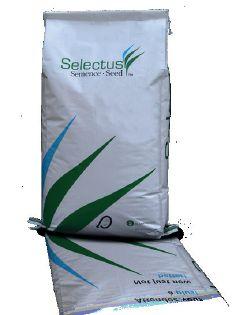










NEW TIER 1 FLEET FEATURING 10% DISCOUNT ON A ONE-TIME ONLY QUALIFYING PURCHASE
ADDITIONAL DEEPER DISCOUNTS OFFERED FOR $2,500 AND $5,000 INVESTMENTS
EXTENDED PROGRAM TERMS TIERS 2 & 3 WITH DISCOUNTS UP TO 24 MONTHS
FOR








EXPANDED PRODUCT RANGE INCLUDES BOTH ECHO AND SHINDAIWA PRODUCTS
POWER & PERFORMANCE GUARANTEED COMMERCIAL GRADE PRODUCTS & INDUSTRY LEADING WARRANTIES
TRY BEFORE YOU BUY ECHO’S NO OBLIGATION DEMO PROGRAM